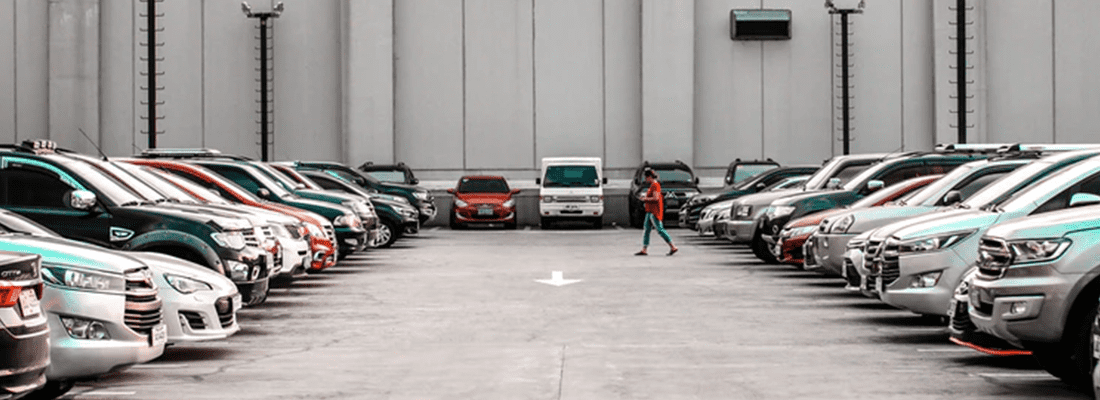Can you imagine having a city where you could easily bike and breath nice fresh air? Where you only have to turn the corner to see green? And where the focus is on its residents? In a recent article by Giel Mertens, an Innovation Consultant, it is argued that cities must have a good strategy in place for mobility to have a positive effect. This argument is one that has been repeated by the European Commission over the past couple of years as well. If you want to have a livable city with parks and green, according to the European Commission one of the most important tools you could use is SUMP.
Besides a good strategy and implementation through SUMP, a focus point within reaching a better quality of life is to include parking management in urban planning. Of course then the question arises; What is SUMP exactly and how does parking fit into this equation?
What is SUMP?
SUMP stands for Sustainable Urban Mobility Planning. It entails that there should be a clear written strategic plan set in place for urban mobility. A plan in which the objective is for all residents to have seamless access from point A to point B through transportation options with increased safety and security. Where the efficiency of transportation for people and goods are improved, cost-effectiveness has increased and where limited resources are optimally used. While at the same time increasing benefit for the environment, e.g. by reducing air pollution, and contributing to enhancing the quality of urban life. In short it is a clear plan to reach these objectives, following specific guidelines to create and implement the plan in a more effective way.

Generally, in the SUMP guidelines, you start with an analysis of problems and opportunities, followed by the creation of a clear vision, structured objectives and targets. After finishing the analysis and the vision, the following step is the creation of the Sustainable Urban Mobility Plan. This plan must include measurable targets to address long-term challenges of urban mobility and include future trends which could be used to benefit sustainability. The final steps include the implementation and monitoring of the plan, while involving relevant authorities, stakeholders and private companies. Following these guidelines will help create a complete and effective way of planning.
In October this year, the first updated SUMP guidelines were introduced. This was the first update since the guidelines had been launched in 2013. The SUMP guide was updated to incorporate the results of recent EU-funded projects, developments in urban mobility and has a new bunch of great practices mentioned throughout the guide.
The development of urban mobility
As you might imagine, urban mobility is rapidly changing and different subjects should be included as a section in the SUMPs.
Sustainability is one of the main goals across the globe and this of course has its effect on mobility as well; countries strive to lessen their CO2 emissions and to optimise their usage of resources. Public transport, biking and walking are becoming the preferred way of transport. Which makes it important to raise the attractiveness, safety, accessibility and security of these forms of transportation.
Of course going electric, whether it be in the transportation sector of goods or people, is starting to creep its way into our daily lives. It is one impactful factor which should be included in the planning of sustainable urban development. Think about all the cars which have to find a place to recharge.
Smart ways to deliver to homes is another interesting subject to include in the SUMPs; deliveries and postage take up a big chunk of the transport nowadays, as more people order online. It is important to think about how this type of mobility can be improved on, which could mean more deliveries by bike or electric vehicles.
Another subject which will come into account in the near future is automated driving. Which could have a high effect on the way streets are used and what kind of parking will be needed.
Holding Big Data into account helps to give even more insights into the entire mobility process and can be used to test and find best practices.
One other noticeable development these past couple of years has been in the adaptation of new transport modes, in which vehicles do not have to be owned and sharing is becoming a staple in mobility. The effect it has on mobility in cities has been undeniable and should be accounted for in the planning.
As mentioned before, quality of life is an objective in the mobility plans. Creating more space to live and breath is high on the agenda, to help increase public health.
Last but certainly not least: parking. This section is often the most underdeveloped section in the includement of the SUMP. It is often left out or forgotten, even though parking takes up a lot of room on the street and has a huge effect on mobility in general. Good parking management means less parking spots on the streets and optimal usage of unused off street spaces.
More focus on parking (with Park4SUMP)
Cutting down on on-street parking will give space to aide in the completion of other objectives from the SUMP, such as more green, better quality of life, and space for public transport, bicycles and pedestrian areas. Good parking management has been proven to deliver sustainable urban mobility in cities. To help create awareness of the importance of including parking in your Sustainable Urban Mobility Plans (SUMPs) and to help cities integrate innovative parking management solutions for better mobility and quality of life is exactly why Park4SUMP was founded.
Park4SUMP is a project which shows that parking management is a game changer for urban mobility. In this project, which runs between September 2018 to March 2022, aims to help 16 partner cities to:
- Integrate parking management into their (future) SUMP. This could for example be done in coöperation with smaller parking oriëntaded parties whom share the same views, such as Mobypark in The Netherlands and France.
- Free an average of 10% of public space currently used for parking by means of participatory planning, think of enhancing off-street parking and creating automatic and IoT based solutions to optimise the usage of parking which is already there and cutting down on on-street parking.
- Invest at least 10% of parking revenues into sustainable transport, active modes such as walking and cycling and develop a more human-centred neighbourhoods.
- Park4SUMP aims at stimulating further innovation in parking management and turning parking policies from being reactive and operational as today to become more strategic, effective and holistic.
It will stand as an example to show other cities that parking is part of the bigger strategy, as good parking management can help free up public space, support local businesses, reduce search travel, generate revenues, and make cities more attractive.

In conclusion, you could say that it is advised to create a complete SUMP plan. One which includes all the trends and anticipations and should always include smart parking management. By adding the focus on smart (off-street) parking, you (literally) give way to complete a lot of other mobility goals.
Interested in keeping up to date on the Park4SUMP developments and results? Take a look at their website for the latest updates and for inspiration. Want to know how you (and your business) can contribute to a more livable city? You could for example already simply start sharing your own unused off-street parking to help contribute to less parking on the streets, share rides or help plant urban trees whenever possible.





